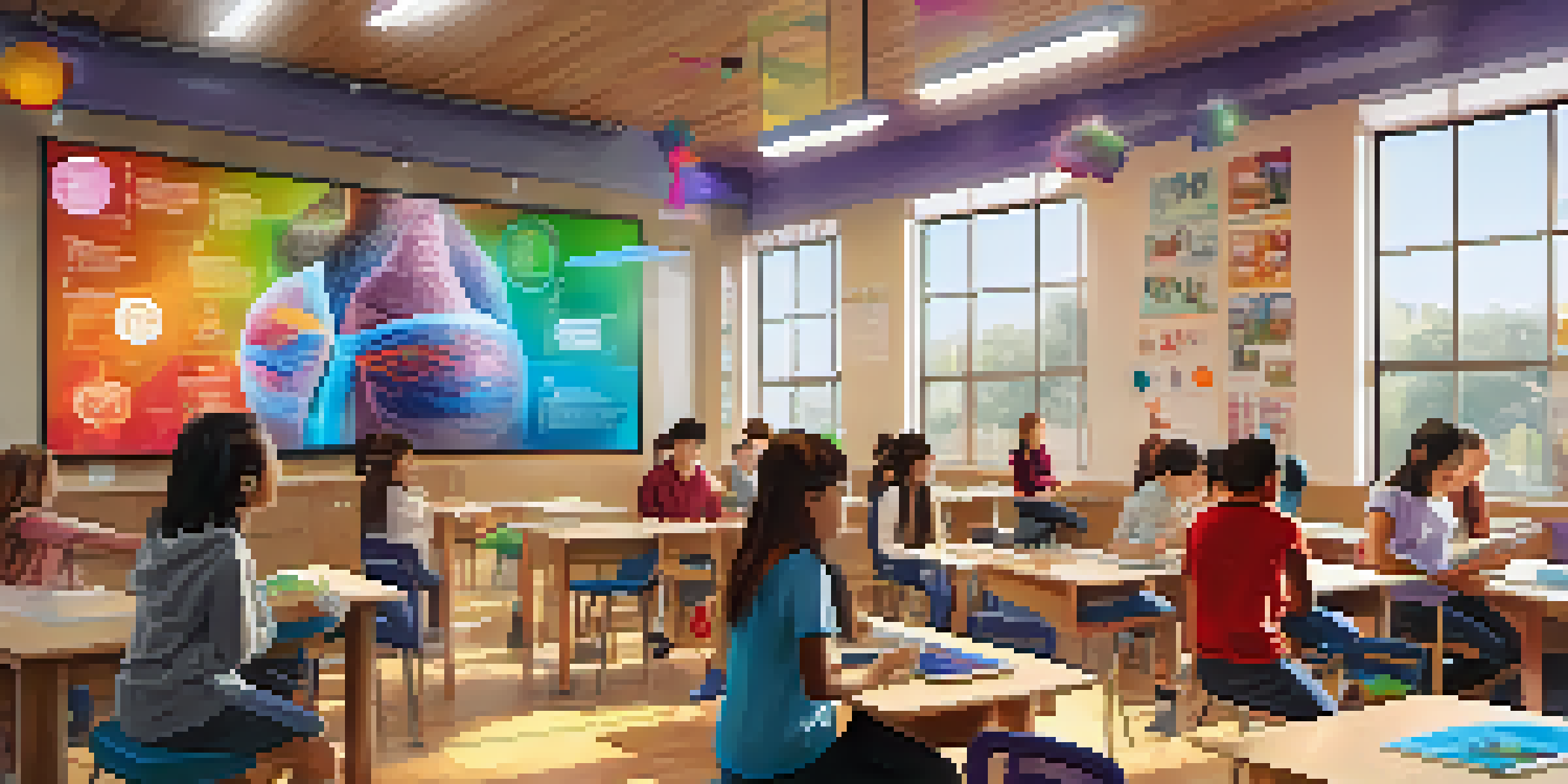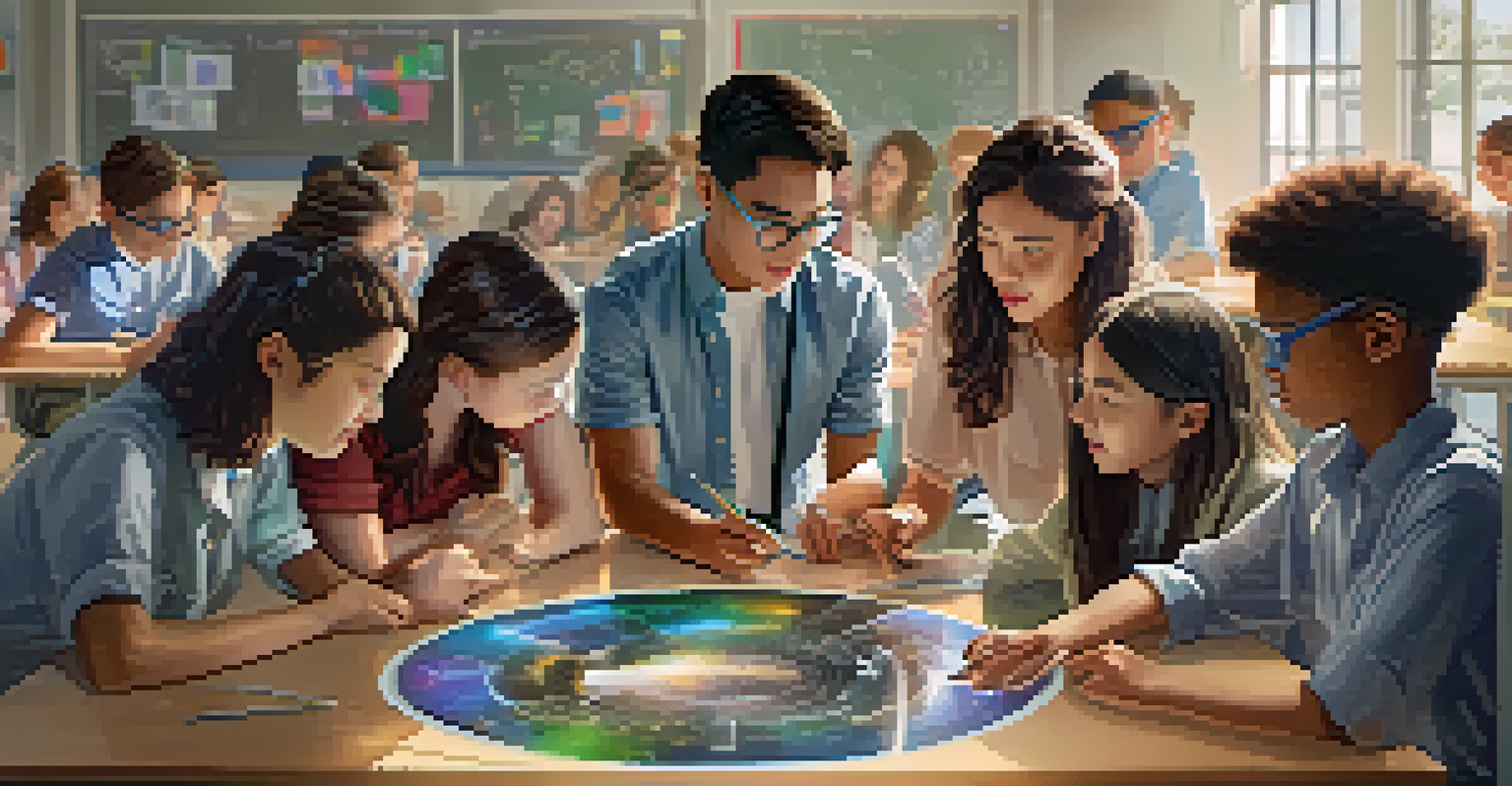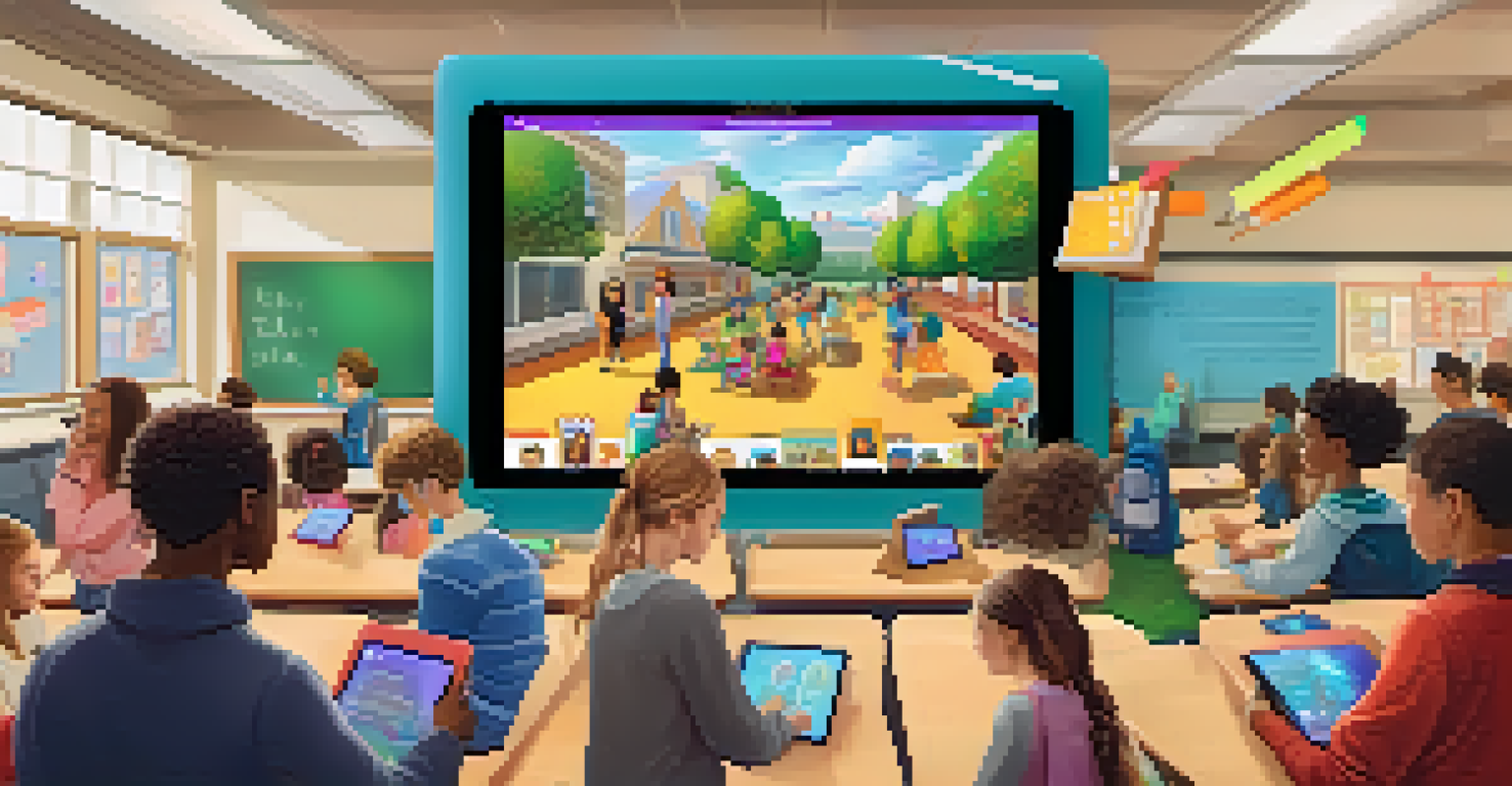AR and Classroom Management: Tools for Teachers

Introduction to Augmented Reality in Education
Augmented Reality (AR) is changing the landscape of education, offering interactive experiences that engage students like never before. Imagine a classroom where students can visualize complex scientific concepts or historical events in a 3D environment. This technology not only enhances learning but also aids in classroom management by maintaining student focus and interest.
The great thing about augmented reality is that it allows you to interact with the world in a whole new way.
By integrating AR into lessons, teachers can create immersive scenarios that encourage participation. For instance, a biology class could use AR to explore the human body, allowing students to 'walk through' organs and systems. Such engaging content can reduce behavioral issues, making classroom management smoother and more effective.
As we delve deeper into AR, it's essential to understand how these tools can be utilized for various classroom management strategies. They can help teachers monitor engagement levels and adapt their teaching methods accordingly, ensuring every student is actively involved in the learning process.
How AR Enhances Student Engagement
One of the most significant advantages of AR is its ability to captivate students' attention. Traditional teaching methods may sometimes struggle to keep students engaged, but AR transforms lessons into interactive experiences. For example, students can use AR apps to see historical figures come to life or view mathematical concepts in a tangible way, making learning more relatable.

This increased engagement not only fosters a love for learning but also aids in classroom management. When students are actively involved, they are less likely to become disruptive. Teachers can use this heightened interest to streamline their management strategies, focusing more on teaching and less on discipline.
AR Boosts Student Engagement
Augmented Reality transforms traditional lessons into interactive experiences that captivate students' attention and reduce disruptions.
Moreover, AR can cater to various learning styles, ensuring that each student finds something that resonates with them. Visual learners, for instance, benefit immensely from AR's graphical representations, while kinesthetic learners can engage with interactive elements, effectively reducing the need for extensive classroom management interventions.
AR Tools for Real-Time Feedback
AR tools provide teachers with real-time feedback on student performance, which is invaluable for effective classroom management. For example, through AR assessments, teachers can instantly gauge a student's understanding of a topic as they interact with virtual content. This immediate insight allows educators to adjust their teaching approaches on the fly.
Education is not the filling of a pail, but the lighting of a fire.
With real-time data, teachers can identify students who may need additional support, helping to prevent potential disruptions before they escalate. By addressing learning gaps promptly, teachers can maintain a more focused and harmonious classroom environment.
Furthermore, these AR platforms often come with analytics features that track student progress over time. This data can be instrumental in shaping future lesson plans and classroom strategies, ensuring that every student receives the attention and resources they need to succeed.
Building Collaborative Learning Environments with AR
AR tools can foster collaboration among students, creating a sense of community that enhances classroom management. When students work together on AR projects, they not only learn from the content but also from each other, building essential social skills. This collaborative spirit can help reduce conflicts and distractions in the classroom.
For instance, group activities that involve AR can encourage students to communicate and share ideas. This peer interaction is crucial for developing teamwork skills while keeping the focus on the task at hand. As a result, teachers can spend less time managing behavior and more time facilitating learning.
Real-Time Feedback Enhances Learning
AR tools provide immediate insights into student performance, allowing teachers to adapt their lessons and support struggling learners effectively.
Additionally, collaborative AR experiences can be designed to include roles that cater to different strengths, ensuring that each student feels valued. By recognizing individual contributions within a group setting, teachers can help promote a positive classroom culture.
AR for Personalized Learning Experiences
Personalized learning is another area where AR shines, allowing teachers to tailor lessons to individual student needs. Through AR applications, students can progress at their own pace, exploring topics that interest them while still meeting curriculum standards. This flexibility can significantly enhance classroom management by reducing frustration for both students and teachers.
For example, a student struggling with a concept can revisit it through an AR tool that explains it in a different way, while others can advance to more complex topics. This differentiation not only empowers students but also helps maintain a productive learning environment, as all learners are engaged at their appropriate levels.
Moreover, personalized AR experiences can help teachers identify each student's unique learning trajectory. By understanding where each student excels or struggles, educators can provide targeted support, further minimizing classroom disruption and fostering a conducive learning atmosphere.
Challenges and Solutions for Implementing AR
While AR offers many benefits for classroom management, it also presents challenges that teachers must navigate. One major concern is the accessibility of technology; not all students may have access to AR devices or apps outside of school. This inequality could lead to gaps in learning if not addressed properly.
To tackle this, schools can invest in shared AR resources or provide devices for students who lack access. Teachers can also design assignments that allow students to complete tasks using various methods, ensuring that all students can participate regardless of their technological capabilities.
Personalized Learning Through AR
Augmented Reality enables tailored educational experiences, allowing students to progress at their own pace while maintaining engagement and reducing frustration.
Furthermore, teachers may need additional training to effectively integrate AR into their lessons. Providing professional development opportunities focused on AR can empower educators to use these tools confidently, enhancing their classroom management strategies and overall teaching effectiveness.
Future of AR in Classroom Management
As technology continues to evolve, the future of AR in classroom management looks promising. Innovations in AR will likely lead to even more sophisticated tools that can further engage students and streamline teaching practices. Imagine a classroom where AI-powered AR experiences adapt in real-time to student responses, creating a truly personalized learning environment.
Moreover, as more educators embrace AR, we can expect a wealth of shared resources and best practices to emerge. This collaborative effort will enhance the effectiveness of AR tools and facilitate smoother classroom management strategies across various educational settings.

Ultimately, the integration of AR into classrooms holds the potential to transform not just how students learn but also how teachers manage their classrooms. By harnessing this technology, educators can create dynamic, engaging environments that foster both learning and positive behavior.